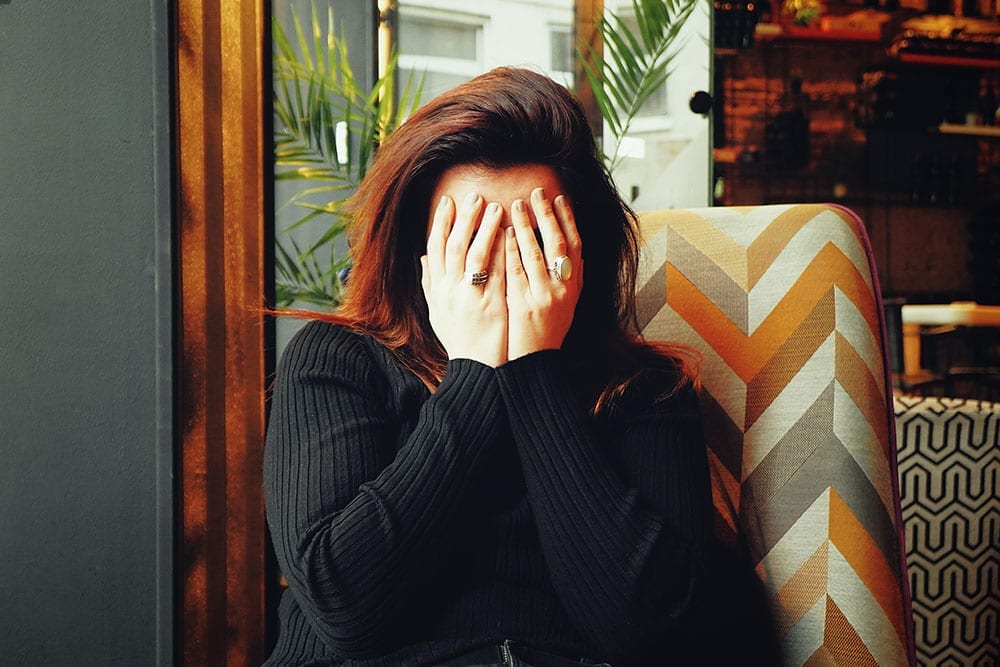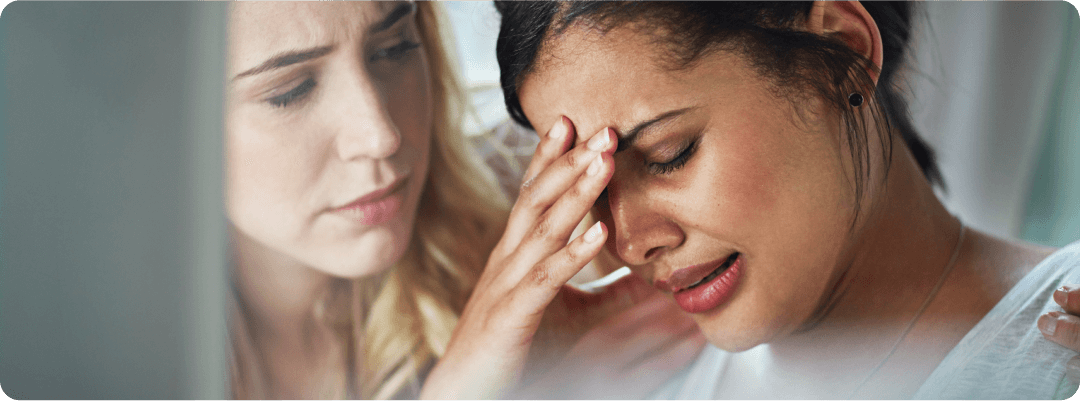
Anxiety and addiction are two conditions that, unfortunately, develop in far too many Americans. Also, it’s not unusual for the two disorders to co-occur. What are addiction and anxiety? Why do they overlap, and what are the treatment options? It’s important to learn more about these disorders and how they affect people. It is also best to gain more information about available treatment options for those who are suffering from this dual diagnosis.
What is Anxiety Disorder?
Anxiety Disorder is more than just worrying or being nervous about something. It is extreme anxiety that can occur even if there’s no visible reason to be anxious. People suffering from anxiety find it difficult to live their family, social, and professional lives without continually feeling anxious. Approximately 20% of people suffering from anxiety or mood disorders also have a substance use disorder.
What Are the Types of Anxiety Disorders?
There are 5 major types of anxiety disorders. They include generalized anxiety disorder (GAD), obsessive-compulsive disorder (OCD), panic disorder, post-traumatic stress disorder (PTSD), and social anxiety disorder.
Generalized Anxiety Disorder or GAD
For an adult suffering from generalized anxiety disorder or GAD, symptoms may begin as a teen or young adult. Although it can run in families, why this occurs is unknown. The symptoms of GAD can get better or worse over time. Individuals who suffer from this type of anxiety may:
- Be irritable
- Startle easily
- Sweat profusely
- Feel tired all the time
- Experience abnormal amounts of worrying
- Twitch or tremble often
- Have chronic nervousness
- Be unable to relax or sleep
- Have difficulty concentrating
- Have aches and pains such as stomach aches or muscle aches
Obsessive-Compulsive Disorder (OCD)
Obsessive-compulsive disorder (or OCD) is a chronic anxiety disorder characterized by repeated thoughts or behaviors that a person finds hard to control. Some adults have the condition, but so do adolescents and children. For most people, OCD can develop as early as 19.
When you have OCD, you can be afflicted with obsessions, compulsions, or both. This chronic condition can severely interfere with one’s life. This disorder can also represent physical characteristics such as tics, eye movements, facial grimacing, etc. The causes of obsessive-compulsive disorder are unknown, but genetics may be a risk factor.
Obsessions are chronic, repeated thoughts, mental images, or urges. Examples include:
- Fear of germs
- Having to have everything in perfect order
- Repeated thoughts surrounding taboos, such as pornography
Compulsions are repeated behaviors that are hard to control. Examples include:
- Excessive cleaning
- Excessive behavior, such as having to check to see if the car door is locked over and over
Panic Disorder
A form of anxiety disorder is panic disorder. This is a condition that manifests itself with unexpected and repeated cases of intense fear. It is a kind of fear that is often not associated with any real existing danger. Sometimes this fear can be so severe that a person cannot move, unable to leave their home, and unable to visit specific locations.
Physical manifestations of this fear include:
- Dizziness
- Chest pain
- Heart palpitations
- Shortness of breath
- Abdominal discomfort
Panic attacks can typically begin when a person is a young adult. Also, they happen more with women than with men.
Post-Traumatic Stress Disorder
Post-traumatic stress disorder or PTSD is another form of anxiety disorder. It is a disorder that occurs after a traumatic event. Traumatic events can include things like:
- Military combat
- Natural disasters
- Violent personal attacks
A typical example of PTSD occurs with military veterans. This is also known as shell shock and combat stress. Many of these veterans have a difficult time readjusting to everyday life. For example, veterans who served and dealt with bombs’ constant sounds may experience panic attacks whenever they hear a noise that reminds them of explosions, such as firecrackers.
But, many people suffer from PTSD as a result of other types of traumatic events. Victims of domestic abuse may develop symptoms of post-traumatic stress disorder. People may also develop this disorder as a result of a serious accident.
Social Phobia
Social phobia, also known as social anxiety disorder, is a fear of people or social situations. It is a mental health condition that can affect a person’s ability to work, go to school, and do daily activities.
Often people who have social phobia are afraid of being judged by others or are self-conscious in social situations. People who suffer from this condition are often scared to meet people and avoid crowds, even small gatherings. Social phobia can even manifest itself in smaller ways, such as eating in front of someone.
Approximately seven percent of Americans are affected by a social anxiety disorder. It typically can begin in childhood and can last for a short time or even a lifetime. Manifestations of this kind of condition can be sweating, rapid heart rate, nausea, etc.
Treatment Options for Anxiety and Addiction
Treatment options for these conditions are separate, but overlap in some areas.
Psychotherapy
With a 77% sensitivity, the carbohydrate-deficient transferrin test is one of the most accurate when it comes to detecting chronic alcohol abuse. Physiologically, the CDT detects the percentage of transferrin in the liver that is carbohydrate-deficient. Transferrin is a substance that the human liver produces to transfer iron molecules from the intestine to other organs and cells in the body that need iron to operate.
If you consume alcohol at a rate of 5 units or more per day, your liver will not produce a normal percentage of healthy transferrin. Factors such as medications, liver disease, and overall poor health can also cause the percentage of carbohydrate-deficient transferrin in the body to fall into an unhealthy range.
Healthy individuals that do not abuse alcohol have 0 – 1.6% of transferrin in their liver that are carbohydrate-deficient. People who chronically abuse alcohol have anywhere from 1.6% – 10% of transferrin in their body that is carbohydrate-deficient. Medical professionals consider chronic alcohol abusers whose liver transferrins are 10% carbohydrate-deficient to be extreme alcoholics.
Medication
One of the most common ways to deal with anxiety is with prescription medication. Medication for anxiety typically can only legally be prescribed by a medical doctor, such as a psychiatrist. Medicine includes anti-anxiety drugs, such as Xanax or Valium. They also include antidepressants such as Zoloft and Paxil and beta-blockers such as Sectral and Tenormin.
Support Groups
Attending a support group is another way to deal with anxiety. These groups typically have a leader making sure things are moving smoothly. The leader is often a trained professional.
Yoga, Meditation, and Other Holistic Techniques
There are nontraditional ways to deal with anxiety that have proven to be helpful. These techniques include yoga, meditation, aerobics, etc. Meditation, for example, can help a person focus on their breathing and learn to become present in the moment, which helps with anxiousness.
Detoxification
Treatment for a substance abuse disorder will, in almost all cases, begin with detoxification. Medically managed professional detox helps keep the patient as comfortable as possible as the body clears itself of the drug. After detoxification, further drug addiction treatment must occur. Detoxification, on its own, does not address the problem of addiction.
Residential Treatment
One form of treatment is a residential treatment program. It is a 24 hours treatment and generally lasts for 90 days to as much as a year. Typically conducted in a non-hospital setting and centered on intensive and comprehensive approaches, this type of treatment addresses the addiction and re-entering society.
The therapy is structured and can sometimes be contentious for the patient. He or she must be willing to do what is asked of them to heal and return to society without the destructive beliefs and patterns of before. This kind of treatment can also include employment training and other training.
Short-Term Treatment
Short-term treatment is a residential program that often lasts anywhere from three to six weeks and focuses on a 12-step approach. These therapies work well for those who don’t need as intensive treatment as long-term. After short-term treatment, the person needs to get involved in aftercare programs to help prevent relapse.
Outpatient Treatment
Outpatient treatment costs less than short term and long term and is not residential. It works best for people who cannot leave their jobs or who have a sound support system. One of the common factors of outpatient treatment programs is group counseling.
Individual or Group Counseling
This counseling allows the person to receive help from a professional without the residential requirement. They help patients work on their coping strategies and maintain abstinence. Often counseling is in conjunction with other types of treatment.

FAQs
How are anxiety and addiction connected?
They commonly co-occur. Your page notes it’s not unusual for both disorders to overlap, and it frames this as a dual diagnosis that benefits from integrated care.
What is an anxiety disorder?
More than everyday worry—anxiety disorders involve persistent, often uncontrollable anxiety that disrupts family, social, and work life. The page also notes that about 20% of people with anxiety or mood disorders also have a substance use disorder.
What types of anxiety disorders are there?
What are common GAD symptoms?
Irritability, being easily startled, excessive worry, trembling or twitching, sweating, fatigue, trouble relaxing or sleeping, difficulty concentrating, and aches or pains.
What is OCD and how does it present?
OCD involves persistent obsessions (e.g., fear of germs, need for perfect order, intrusive taboo thoughts) and/or compulsions (e.g., excessive cleaning or repeated checking) that are hard to control; it can include physical tics.
What is panic disorder?
Repeated, unexpected bouts of intense fear—often without present danger—plus physical symptoms like dizziness, chest pain, heart palpitations, shortness of breath, and abdominal discomfort.
What is PTSD in this context?
PTSD can follow traumatic events (combat, disasters, violent assaults, accidents, domestic abuse). Triggers can cause panic attacks or distress long after the event.
What is social anxiety disorder (social phobia)?
A strong fear of social situations or being judged; people may avoid crowds or even activities like eating in front of others. Around 7% of Americans are affected.
What treatment options does Silver Linings describe for anxiety and addiction?
A stepped, individualized approach that may include psychotherapy, medication, support groups, yoga/meditation and other holistic techniques, and (when substance use is present) detox, residential programs, short-term residential, outpatient, and individual/group counseling.